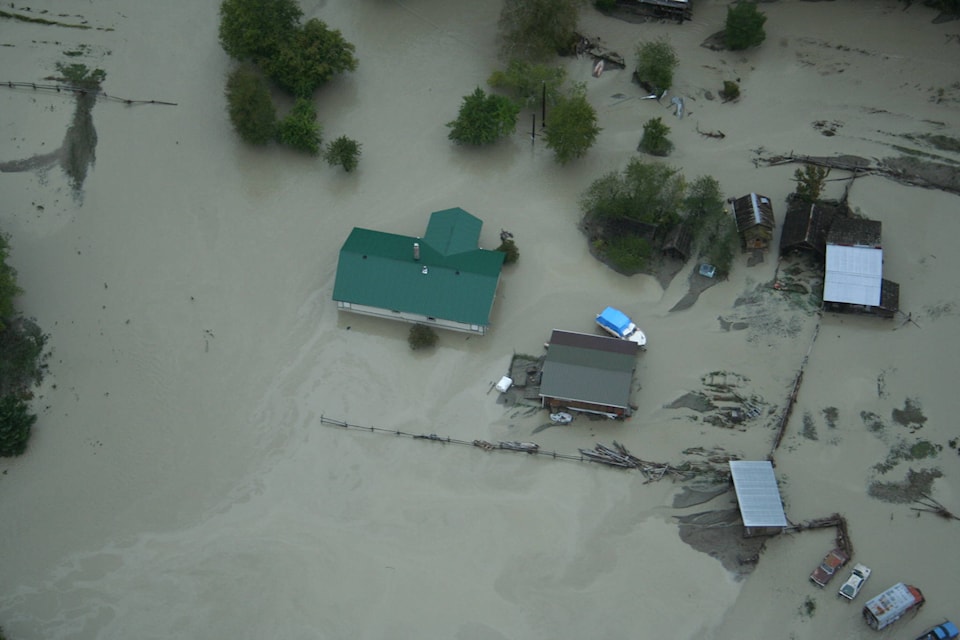Bella Coola is no stranger to emergencies, yet for the past several years a full-time position has been absent. Multiple community agencies including the CCRD, the Nuxalk Nation, EMBC and local provincial government offices have banded together to rise to the challenge, but as of last week the region finally has a new Emergency Management Coordinator.
Jessica Miller, who has relocated to the Valley from Victoria, held a previous position with the provincial agency responsible for emergencies, Emergency Management BC.
“I worked as a senior advisor on the strategic partnerships team,” explained Miller. “That position actually arose from the bilateral agreement between the province and Indigenous Services, so it was a good prelude to where I am now.”
Miller’s position is the result of months of hard work and dedication from representatives from the Nuxalk Nation, the Central Coast Regional District and the province.
In March of this year a historic MOU was signed by all three parties, which solidified an agreement to better co-ordinate efforts to prepare for, mitigate, respond to and recover from emergencies in the Bella Coola Valley.
“Three governments came together to sign this MOU, which resulted in the hiring of this new EMC position,” said CCRD Chair Samuel Schooner.
“That we are now working together in any emergency situation is nothing short of amazing. We are the pilot project and we will succeed and show the rest of BC and Canada that working together with First Nations through partnerships is a positive step in Truth and Reconciliation.”
Legislation, both federal and provincial, does not lend itself well to communities such as the Bella Coola Valley. Provincial legislation dictates that local emergencies are the responsibility of the regional district, while federal legislation places that responsibility on-reserve for First Nations. In small, remote communities such as the Valley, this framework can make dealing with local emergencies even more challenging and result in duplication of services, inefficiencies, and systematic exclusion.
Thankfully there has been some advancement in this area, and now there is a service agreement between EMBC and Indigenous Services Canada that enables EMBC to provide the province’s emergency management support services to First Nations communities in B.C.
However, the MOU signed between our three local governments has taken an additional step forward by creating a partnership to tailor emergency services in the region, as it was created to lead and co-ordinate emergency management planning by addressing any emergency preparedness, response, recovery or mitigation gaps that have impacts beyond a single jurisdiction, providing oversight on high-level emergency management issues, and acting as a vehicle to bring other relevant stakeholders, provincial ministries, federal departments and Indigenous communities together to collaborate on emergency management initiatives.
“I am quite sure that this is the first MOU of its kind in B.C. and possibly in Canada,” said Nuxalk Nation Administrator Wilma Mack. “It enables us to work with the best people in EMBC; to learn from them and then apply it locally to develop our own grassroots plans and procedures.”
Bella Coola has faced several floods in the past decade, the most notable being the flood of 2010 which displaced dozens of residents and destroyed numerous sections of the highway, resulting in the community being cut-off from the main transportation grid for nearly a month. This was repeated in a smaller scale in 2017, when wildfires across the plateau closed the highway at whim, trapping people on either side.
Miller says that while flooding and fires remain top of mind for her as she looks forward, a key part of her work here will be completing the hazard risk vulnerability plan and reaching out to the community.
“We are definitely preparing for any potential event that could occur this fall, as well as the broader goal of completing the hazard risk assessment and updating the emergency management plan so that it works for the entire community,” she said. “We are also looking to engage with the community and the youth, as we know from experience that communities fare best in an emergency situation when they are informed and engaged.”
Another key element of emergency planning is incorporating the effects of climate change. Local students joined the millions of people who rallied around the world last week to draw attention to the issue but they recognized that climate change effects are felt locally first, and emergency management is now taking this into consideration.
“Right away I think of flooding and fires, but this is why completing the hazard risk assessment is so important,” said Mack. “It will provide us with a more detailed look at the different threats posed by climate change and what we can do to mitigate them.”
The Nation has also taken its own steps forward to deal with climate change, creating a new department which combines Clean Energy with Climate Action and Emergency Management.
“Anything we can do to reduce our dependence on fossil fuels is combating the rapid effects of climate change, and that in turn effects what we do in emergency management,” Mack explained.
Mack also expressed the need for the community to work together during an emergency, and how these situations can bring out the best in people and the communities they live in. “There’s nothing better than emergency management to bring communities together,” Mack said. “This is one area that the community really needs to work together on and it will be beneficial for everyone.”
